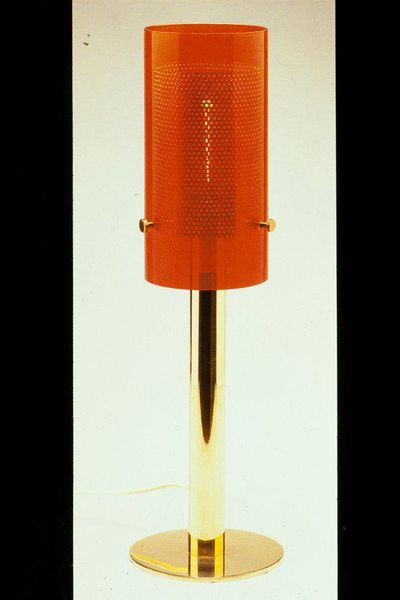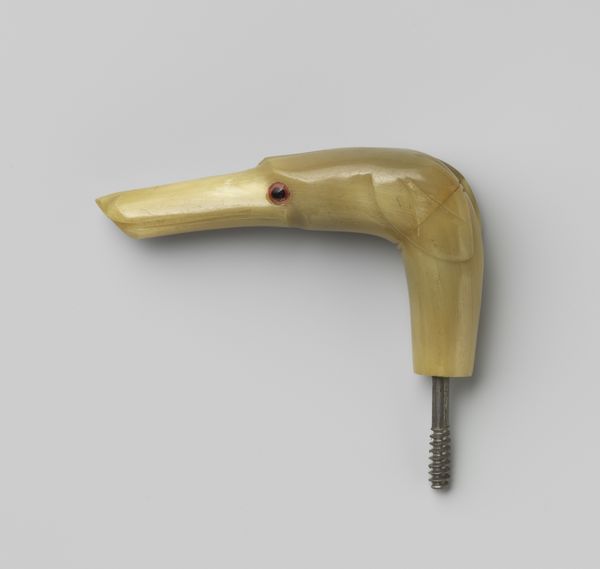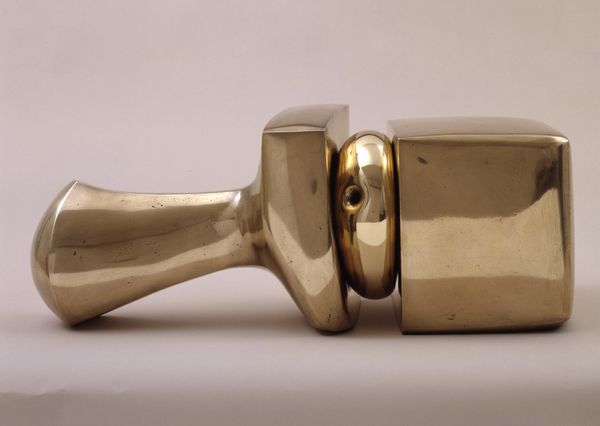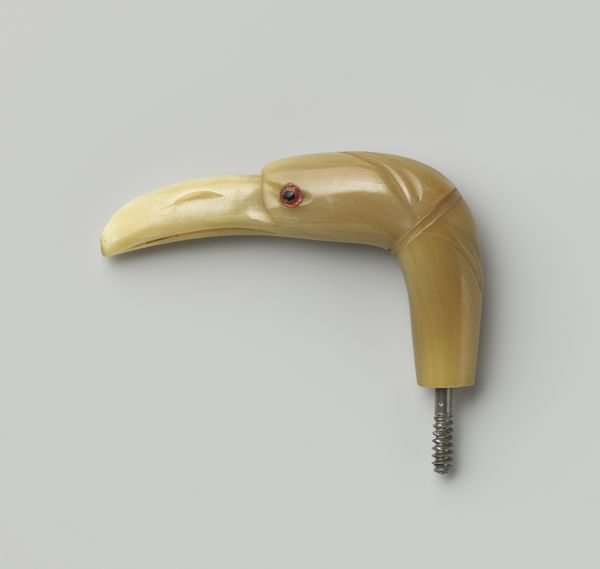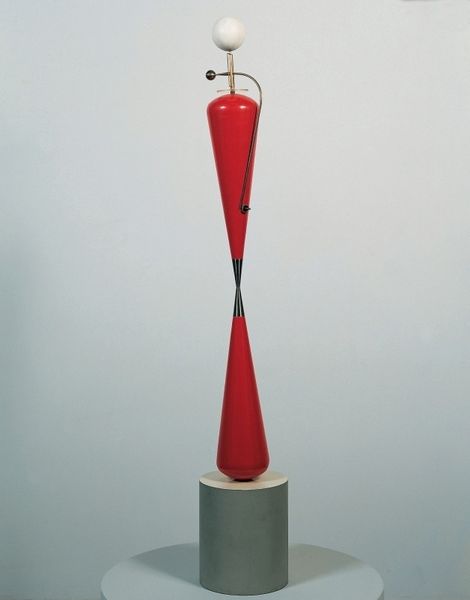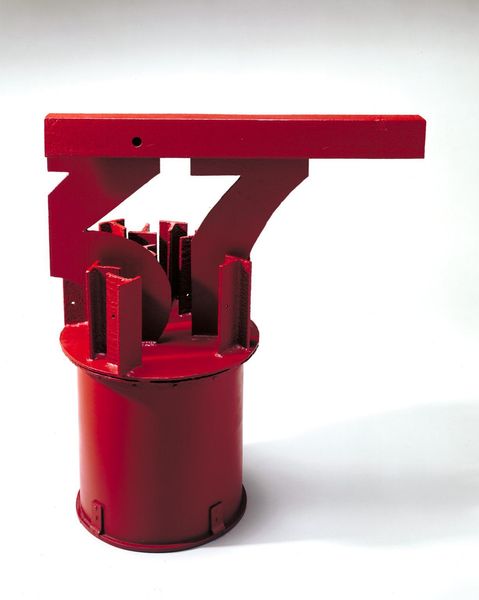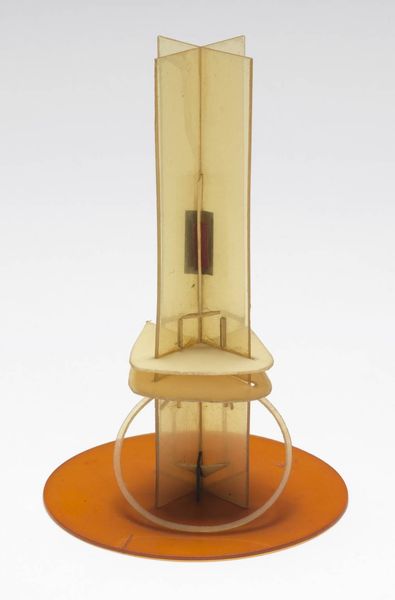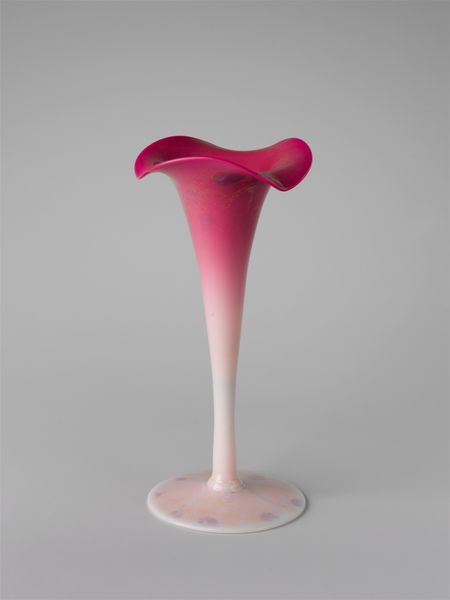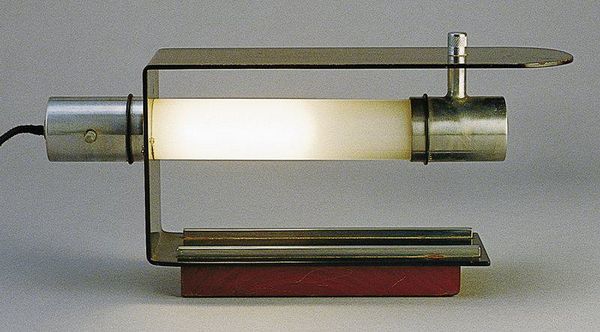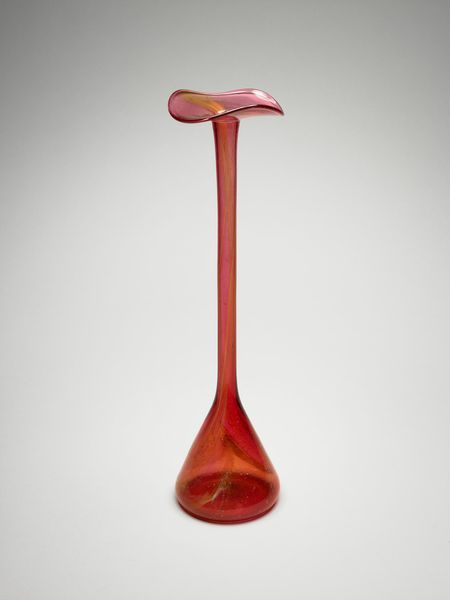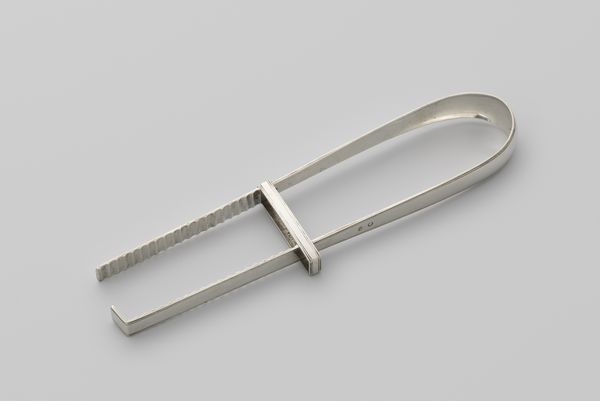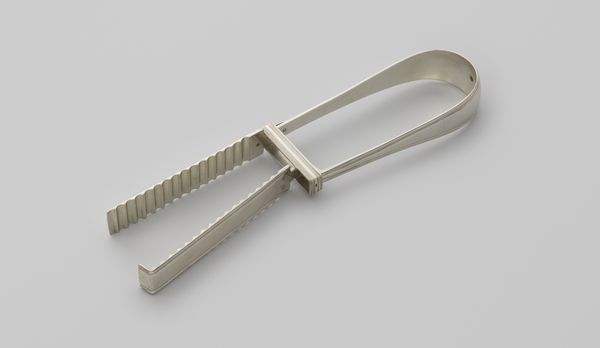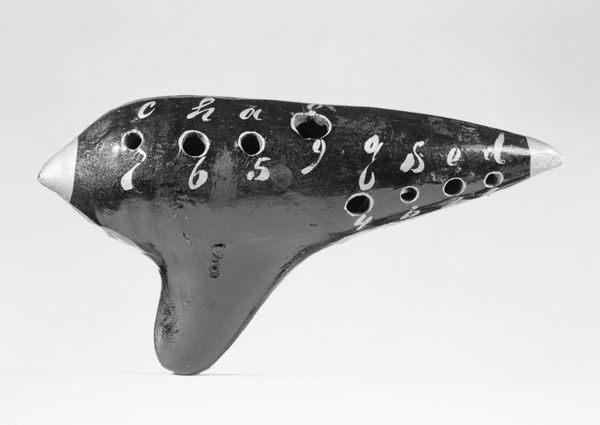
readymade, sculpture
#
art-deco
#
technical car design render
#
automotive concept
#
3d printed part
#
plastic material rendering
#
product design sketch
#
fantasy-art
#
readymade
#
automotive design photography
#
3d shape
#
prop product design
#
geometric
#
sculpture
#
metallic object render
#
united-states
#
product render
Dimensions: 6 1/2 x 11 x 2 3/4 in. (16.51 x 27.94 x 6.99 cm)
Copyright: No Copyright - United States
Editor: We're looking at "Ice Gun," a 1935 sculpture currently residing at the Minneapolis Institute of Art. It's strikingly retro, almost like a prop from a Flash Gordon serial. It gives me this immediate impression of utopian futurism clashing with potential militaristic undertones. How do you interpret this work, given its historical context? Curator: I think your reading is a great point of departure. The '30s were a period rife with anxiety and utopian longing. Mass production had reshaped daily life and ideas, contributing to social tensions but also unprecedented opportunities. "Ice Gun" encapsulates that tension; the streamlined Art Deco design speaks to an almost naive faith in progress and technology, but then the gun form itself gestures toward more sinister possibilities like warfare and control. Does that make you think about it differently? Editor: It does, particularly when considering gender roles. Could the phallic nature of the gun reflect the patriarchy of the time? Curator: Absolutely! Remember, industrial design during this period was largely a male domain. Reimagining weaponry could have reflected how that power dynamic was being imagined or subtly reinforced. Also, don't underestimate the "fantasy" element, because fantasy serves the purposes to both liberate and dominate the popular imaginary with narratives about identity and control. It can provide escapism but also justify prevailing structures. Is "Ice Gun" simply a cool design, or is it saying something about the politics of progress and technology? Editor: So it could be reflecting anxiety about who wields power and how new technologies reinforce that power? Curator: Exactly. By understanding the artwork in its cultural and social context, and analyzing what it represents through philosophical lens, we get a much fuller and nuanced interpretation. Editor: It’s fascinating to consider these layers, the aspirational design versus the implications of violence. Thanks for sharing those ideas. Curator: My pleasure. It is essential to acknowledge historical context when deconstructing art to bring conversations surrounding politics and identity to the surface.
Comments
minneapolisinstituteofart almost 2 years ago
⋮
It could have leapt from a 1930s Buck Rogers science fiction comic strip. But instead of death rays, this gun fired ice into cocktail glasses. Activated by a spring-loaded plunger and trigger mechanism, it crushed ice cubes and “shot” the ice spray out through the rubber gasket, to the delight of guests. This gadget connected the new cocktail culture that took hold after the repeal of Prohibition (which outlawed the sale of alcohol in the United State between 1920 and 1933) with popular science and interest in space travel. The product brochure says the shaved ice can also fill the “ice bag,” presumably to hold against your aching head after too many cocktails.
Join the conversation
Join millions of artists and users on Artera today and experience the ultimate creative platform.
